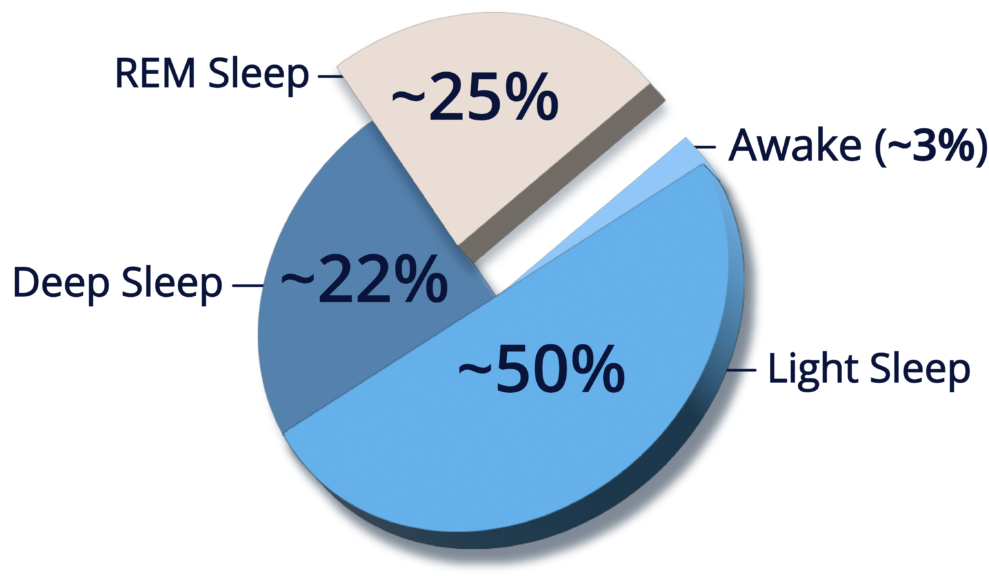Sleep is essential for every process in our body. To best understand its complexity, we have to learn about the different stages of sleep and their functions. In total there are four stages of sleep split into two groups- REM and NREM. NREM stages, or non-rapid eye movement, are: awake, light sleep, and deep sleep. REM, or rapid eye movement, is the final stage that gets longer after each cycle. NREM stages usually last for 5 to 20 minutes. REM stages first last for about 10 minutes and at later stages can last up to an hour. Ideally our body has time to go through four or five of these four-stage cycles that usually last about 90 minutes. So, what happens during those stages?
Percentage of Time Spent in REM Sleep and NREM Sleep

Awake
The awake stage is the short time before and after falling asleep. It can also periodically occur during sleep. This is the starting point that transitions our consciousness from the state being awake to that of sleeping. Your brain slows down as does your heartbeat, eye movement, and breathing. The body relaxes and the muscles may twitch. It should last for around 5 to 10 minutes.
Light Sleep
As the name suggest, this is the lighter stage of our sleep, during which it is easier to wake up. The heart rate and respiration further slow down and your body temperature drops. This stage is key as it acts as transition between other stages such as deep sleep and REM and we spend the majority of the night in light sleep. This stage usually lasts for up to 20 minutes.
Deep Sleep
This is the stage, during which muscle growth and repair takes place. The blood pressure generally drops but the blood flow to muscles increases and the growth hormone is released. This helps with the repair of cells and the growth of tissue. During this stage, the body strengthens its immunity to better fight off illnesses and infections. It is more difficult to wake up from this sleep from environmental sounds and movements and we feel dizzy and disoriented if woken up.
REM Sleep
While the previous stages had the brain and breathing slowing down, the REM stage does just the opposite. During this stage the brain lights up with activity, closely resembling its activity during the day. Your breathing quickens, your heart rate increases, and our temperature regulations switches off. This is the part of the night, during which we dream. Our bodies are relaxed but become immobilized, so that we don’t act upon our dreams. Importantly, during these stages our emotional memories are processed and stored and we turn information into memory- we learn. This information processing can also help with problem solving.
Typical Night’s Lenght of REM Sleep and NREM Sleep

The interesting part about the length of deep sleep and REM sleep is that it changes after each sleep cycle. During the beginning of the night, we have mainly deep sleep and only 10 minutes of REM sleep. During the last cycles, REM sleep lasts up to an hour, while we get little to no deep sleep. This means that losing two hours of sleep (let’s say out of 8) might mean losing only 25% of your total sleep, but up to 50% of your REM sleep, which can have negative effects on your memory recall and emotional stability.
Understanding how sleep works and how different factors affect it is crucial for us to know how to improve it. We will continue writing regularly about the topic of sleep to provide you with the needed tips to make sure you have a healthy sleep schedule. Make sure to subscribe to our newsletter to get notified when we publish a new article and follow us on social media where we regularly post useful and interesting content. Good night!
























